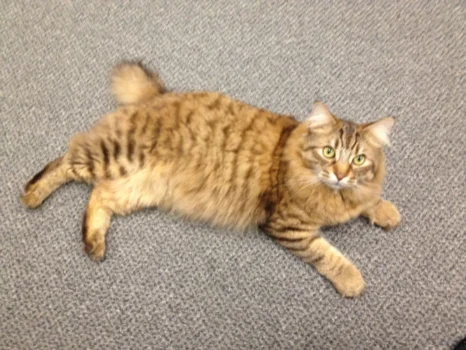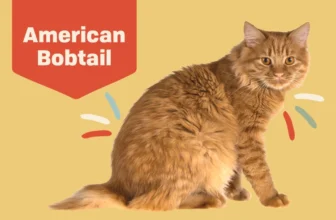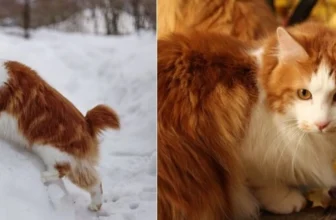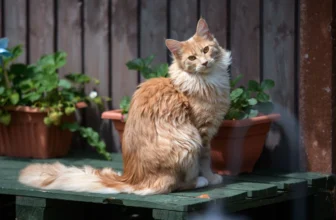As a devoted American Bobtail owner, you know the sheer joy that comes with spending time with these wonderful furry companions. Their playful nature and loving demeanor make them the ideal pets for any cat lover. However, building and maintaining a strong bond with your American Bobtail requires more than just a few cuddles and scratches behind the ears. It takes time, effort, and an understanding of their unique personality and behavior traits. In this article, we will explore various tips and techniques to create a lasting companionship with your American Bobtail, as well as address common issues and concerns that arise during pet ownership. So, grab your catnip and get ready for a purrr-fectly delightful journey into the world of American Bobtails.
Understanding Your American Bobtail
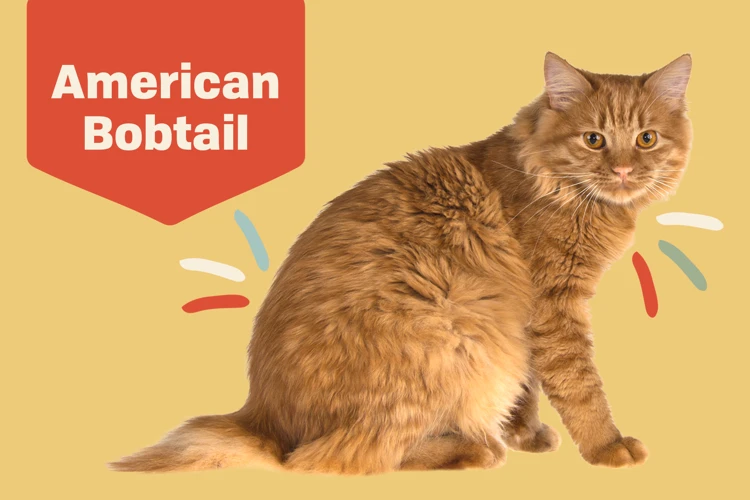
As a cat parent to an American Bobtail, understanding your feline’s unique personality, behavior, and needs is crucial for building a strong and fulfilling relationship. Getting to know your American Bobtail on a deeper level can help you anticipate their needs and create an environment in which they feel safe and comfortable. From their playful nature to their distinct body language, American Bobtails are incredibly unique and fascinating companion animals. In this section, we will explore some of the personality traits and needs of American Bobtails to help you better understand and bond with your furry friend.
Personality and Behavioral Traits of American Bobtails
American Bobtails are highly intelligent and playful cats that love to interact with their owners. They are a relatively new breed, having only been developed in the 1960s. These cats are known for their distinctive bobbed tails, which are the result of a natural genetic mutation. In addition to their unique appearance, American Bobtails are also known for their loving personalities and loyal nature.
Personality Traits of American Bobtails
American Bobtails are known to be outgoing, friendly, and intelligent. They are very social animals that enjoy the company of humans and other pets. They are also known to be very vocal, and will often “talk” to their owners in a chirpy, playful tone. These cats are known for their loyalty and will often follow their owners around the house, always wanting to be near them.
Behavioral Traits of American Bobtails
American Bobtails are known for their energetic and playful nature. They love to play with toys and are especially fond of interactive games that involve their owners. These cats are also known for their hunting instincts, and they enjoy stalking and pouncing on small objects.
Temperament of American Bobtails
American Bobtails are very calm and laid-back cats that are comfortable in a variety of environments. They are also very adaptable and are able to adjust to changes in their surroundings or routine easily. These cats are known for their affectionate nature and love to be around their owners. They are also very good with children and other pets, which makes them a great addition to any family.
American Bobtails are wonderful pets that are well-suited to many different types of households. They are intelligent, loving, playful, and loyal, making them ideal companions for those who are looking for a furry friend to share their lives with. If you’re interested in learning more about the benefits of owning an American Bobtail, check out our article on the benefits of American Bobtail pet.
Body Language of American Bobtails
One of the most crucial things in building a strong bond with your American Bobtail is to understand their body language. As a cat breed with a strong personality, their actions and movements say a lot about how they feel and what they want. Here are some of the common body language of American Bobtails:
| Body Language | Meaning |
|---|---|
| Tail position: | If the tail is held low, the cat may be feeling nervous or afraid. If the tail is straight up, it means the cat is feeling confident and content. A puffed up tail usually indicates that the cat is feeling threatened or defensive. |
| Purring: | Contrary to popular belief, cats do not always purr because they are happy. American Bobtails may also purr when they are anxious or sick, so it’s important to observe their whole body language to understand how they feel. |
| Ear position: | If their ears are turned forward, it means they are interested and alert. If the ears are flattened to the head, it may indicate aggression or fear. |
| Eye contact: | Direct eye contact from an American Bobtail usually means they trust you or are trying to assert dominance. Avoid staring back and instead slowly blink, which is a cat’s way of saying “I trust you.” |
Understanding your American Bobtail’s body language can improve communication and help you respond appropriately. This is especially important when trying to address any unwanted behaviors. If you want to learn more about the personality and behavioral traits of American Bobtails, check out our previous article which will give you a more detailed insight. Additionally, spending quality time playing with your cat can help you understand their emotions and promote their physical and emotional wellbeing. You can learn more about the importance of playtime by American Bobtails by visiting this page.
Food Habits and Preferences of American Bobtails
As a pet parent, one of the most important responsibilities is to make sure your American Bobtail is getting the right nutrition. Providing high-quality food will not only improve their overall health, but it will also impact their behavior and mood. In order to understand the food habits and preferences of American Bobtails, it’s important to consider their natural instincts.
High-protein, Low-carb Diet: American Bobtails, like all cats, are obligate carnivores. This means that they require a diet high in protein and low in carbohydrates. Look for cat food that has real meat listed as its first ingredient, and avoid fillers such as corn or wheat. This will also help prevent obesity, which is a common health problem for American Bobtails.
Small Frequent Meals: American Bobtails have a natural tendency to graze throughout the day rather than eating large meals at once. It’s best to feed them several small meals throughout the day or leave food out for them to snack on as they please. However, it’s important not to overfeed as this can lead to weight gain.
Keep Them Hydrated: Although cats get most of their moisture from food, it’s important to make sure that they have access to fresh water at all times. Providing a water fountain can encourage your American Bobtail to drink more water.
Avoid Human Food: While it may be tempting to share your food with your American Bobtail, it’s important to avoid feeding them human food. Many human foods can be toxic to cats, and feeding them table scraps can cause upset stomachs and picky eating habits.
By understanding the food habits and preferences of American Bobtails, you can provide them with the nutrition they need to live a healthy and happy life. Keep in mind that each cat is unique and may have their own individual preferences. Don’t be afraid to experiment with different types of food to find what works best for your furry friend.
If you want to learn more about American Bobtails and their emotional support capability, check out our article “American Bobtails as Emotional Support Animals: Your Ultimate Guide“.
Tips for Building a Strong Bond
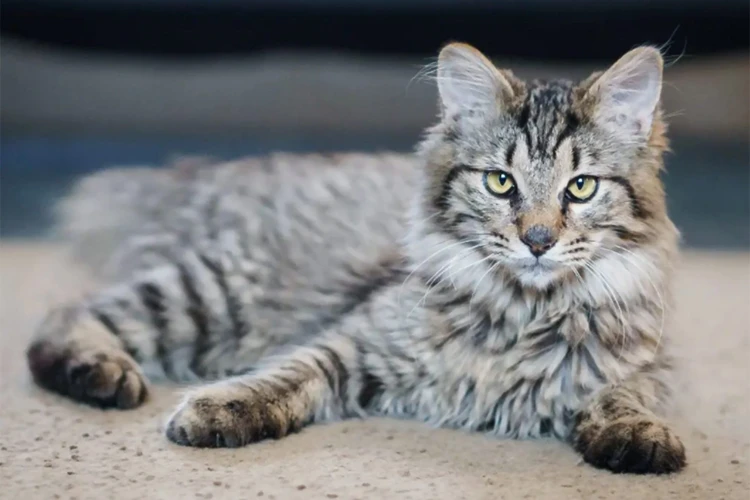
Building a strong bond with your American Bobtail is essential for creating a loving and long-lasting companionship. However, it’s not always easy to know where to start. Thankfully, there are several helpful tips that can guide you towards developing a deeper connection with your American Bobtail. By creating a safe environment, setting aside quality time for interaction, engaging in playtime, and celebrating achievements, you can establish trust and closeness with your feline friend. Let’s explore each of these tips in more detail.
Create a Safe and Comfortable Environment
When it comes to building a strong bond with your American Bobtail, it’s important to create a safe and comfortable environment for them. This will help them feel relaxed and at ease, allowing them to open up and become more affectionate with you. Here are some tips for creating a safe and comfortable environment for your American Bobtail:
- Provide a cozy bed: American Bobtails love to sleep in comfortable, cozy places. Make sure you provide a soft bed or a comfortable sleeping area where your cat can snuggle up and rest.
- Keep the litter box clean: American Bobtails are known to be clean cats, so it’s important to keep their litter box clean at all times. Regularly scoop out the litter and replace it with fresh litter.
- Provide scratching posts: American Bobtails need to scratch in order to maintain their claws, so make sure you provide plenty of scratching posts or pads. This will help prevent them from scratching your furniture or carpets.
- Keep dangerous items out of reach: American Bobtails are curious cats and may try to explore their surroundings. Make sure you keep dangerous items such as cleaning products, sharp objects, and small toys out of your cat’s reach.
- Provide hiding places: American Bobtails love to have hiding places where they can retreat to when they feel anxious or threatened. You can provide a cat tree, a cardboard box, or a hiding tunnel for your cat.
- Provide fresh water and food: American Bobtails need fresh water and food at all times. Make sure you provide clean water and high-quality cat food for your cat.
By creating a safe and comfortable environment for your American Bobtail, you’ll be able to establish a strong bond with them. Remember to show your cat plenty of love and affection, and they’ll repay you with unconditional love and loyalty.
Set Aside Quality Time for Interacting
Bonding with your American Bobtail requires spending quality time with them. Here are some tips for setting aside time for interacting with your feline companion:
- Create a daily routine: Cats thrive on routine, and setting aside specific times each day for playtime and other interactions helps establish a consistent bond.
- Get down to their level: Your American Bobtail is more likely to engage with you if you get down to their level. Sitting on the floor or using a low table for playtime can encourage your cat to come to you.
- Use interactive toys: Interactive toys such as balls, feather wands, or puzzle feeders can keep your cat engaged and make playtime more enjoyable for both of you.
- Try different activities: Each cat has its own unique preferences, and experimenting with different activities can help you find what your American Bobtail enjoys most. Some cats love chasing laser pointers, while others prefer batting around toy mice.
- Give them your undivided attention: It’s important to give your cat your full attention during bonding time. Put away your phone or computer and focus solely on interacting with your feline companion.
Remember, the key to building a strong bond with your American Bobtail is consistency and patience. With time and effort, you and your feline friend can enjoy a loving and fulfilling relationship.
Engage in Interactive Playtime
One way to build a strong bond with your American Bobtail is to engage in interactive playtime with them. It is important to understand that American Bobtails are highly active and playful cats, so playing with them is an excellent way to build companionship and satisfy their natural instincts.
Here are some tips for engaging in interactive playtime with your American Bobtail:
- Provide a variety of toys: American Bobtails are highly intelligent and get easily bored, so it is important to provide them with a variety of toys to keep them engaged. Toys like feather wands, balls, and interactive puzzle toys are great choices for your American Bobtail.
- Make time for play: Set aside some time every day to play with your American Bobtail. This could be in the form of short and frequent play sessions, or one longer session each day. It is important to be consistent and make sure that your cat can look forward to playtime with you.
- Experiment with different types of play: American Bobtails are known to have a love for water and heights, so incorporating games like fetch or climbing can be highly stimulating for your cat. You can also engage in hide-and-seek games or laser pointer play, but be cautious not to overstimulate your cat.
- Watch for signs of tiredness: While playing with your American Bobtail, it is important to watch for signs of tiredness or overstimulation. Signs like flattened ears, dilated pupils or a flicking tail indicate that your cat needs a break. Be sure to end the play session if you notice these signs.
- Use positive reinforcement: As with training, positive reinforcement is essential in maintaining a good relationship with your American Bobtail during playtime. Encouraging your cat with praise, treats or new toys can reinforce good behavior and make playtime more enjoyable.
Interactive playtime with your American Bobtail is not only a fun way to bond with your pet but also provides excellent exercise and mental stimulation for your cat. With a little creativity and patience, you can make playtime with your American Bobtail a regular event in your daily routine.
Training Your American Bobtail
Training your American Bobtail is an important aspect of ensuring they are well-behaved and properly socialized. Here are a few tips for training your feline friend.
| Tip 1: Consistency is Key | When teaching your American Bobtail new behaviors, consistency is key. Use the same words or commands, and be consistent with the behaviors you reward and do not reward. |
| Tip 2: Use Positive Reinforcement | American Bobtails respond best to positive reinforcement, such as treats or praise. When they exhibit good behavior, reward them to reinforce that behavior. |
| Tip 3: Keep Training Sessions Short | Training sessions should be short and sweet, ideally no longer than 15 minutes. This keeps your American Bobtail from becoming bored or frustrated, ensuring they remain engaged and focused. |
| Tip 4: Teach Basic Behaviors First | Start by teaching your American Bobtail basic behaviors, such as sitting or coming when called. Once they have mastered these behaviors, you can move on to more complex tricks or commands. |
| Tip 5: Be Patient and Gentle | Training your American Bobtail takes patience and gentle guidance. Never resort to physical punishment or aggression, as this can damage your relationship with your cat and cause them to become fearful or anxious. |
By following these tips for training your American Bobtail, you can strengthen the bond between you and your feline friend while ensuring they are well-behaved and happy.
Celebrate Your American Bobtail’s Achievements
It is important to celebrate your American Bobtail’s achievements to reinforce positive behavior and strengthen your bond. This could include rewarding them with treats, affection, or special toys. Keep track of their progress and make a note of when they learn new tricks or behaviors. Create an achievement chart or table where you can keep track of their progress and reward them for their accomplishments.
One way to celebrate your American Bobtail’s achievements is to create a treat table where they can choose their reward. Use a small table with different compartments for their favorite treats. This will give them a sense of autonomy and allow them to choose their own reward.
Another way to celebrate your American Bobtail’s achievements is to create a scrapbook of their milestones. You can include photos, notes, and even paw prints to commemorate their progress. This will serve as a reminder of how much they have accomplished and how far they have come. You can even share the scrapbook with friends and family to showcase your American Bobtail’s intelligence and skills.
Finally, one of the best ways to celebrate your American Bobtail’s achievements is to verbally praise and shower them with affection. Tell them how proud you are of their accomplishments and cuddle with them. This will reinforce positive behavior and strengthen your bond. It is important to remember that American Bobtails respond well to positive reinforcement and affection. Celebrating their achievements will encourage them to continue learning and growing.
Celebrating your American Bobtail’s achievements is an important part of building a strong bond with them. Use a treat table, create a scrapbook, and verbally praise and show affection to reinforce positive behavior and encourage continued learning. Keeping track of their accomplishments and celebrating their progress will strengthen your bond and make them feel loved and appreciated.
Understanding and Addressing Unwanted Behaviors
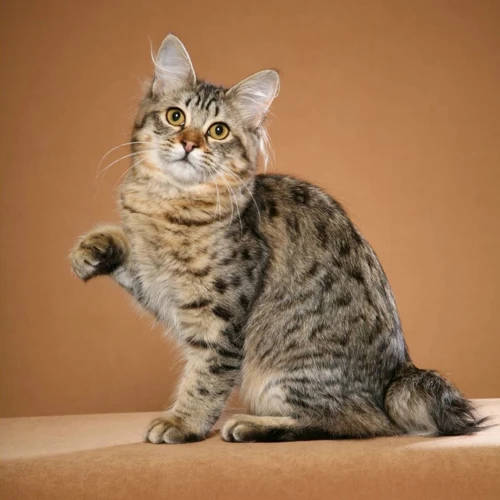
As much as we adore our American Bobtails, it’s important to acknowledge that they can display unwanted behaviors from time to time. These behaviors are not necessarily a reflection of a poorly behaved pet, but they can be signs of various underlying issues. It is crucial to address these behaviors with patience and understanding. In this section, we will explore some common unwanted behaviors in American Bobtails and how to positively reinforce good behavior while avoiding negative reinforcement and punishment. So, let’s dive into understanding and addressing these behaviors.
Common Unwanted Behaviors in American Bobtails
As much as we love our American Bobtails, they can sometimes exhibit unwanted behaviors. It’s important to address these behaviors early on to prevent them from becoming ingrained habits. Below are some common unwanted behaviors in American Bobtails and how to deal with them:
| Unwanted Behavior | Solution |
|---|---|
| Scratching Furniture | American Bobtails love to scratch, but instead of punishing them, provide them with a scratching post or pad. Encourage them to use it by sprinkling catnip on it and praising them when they use it. Cover the furniture they usually scratch with double-sided tape to deter them from using it. |
| Not Using the Litter Box | If your American Bobtail is not using the litter box, make sure it’s clean and in a quiet, accessible area. Consider using a different type of litter or a covered litter box. If the behavior continues, take them to the vet to rule out any medical issues. |
| Aggression | If your American Bobtail is acting aggressive, it may be due to fear or stress. Give them space and time to calm down, and try to identify what is causing the aggression. Provide them with a safe space and toys to play with. Consider talking to a veterinarian or cat behaviorist for further advice. |
| Destructive Chewing | American Bobtails love to chew, so provide them with appropriate chew toys and treats. Keep any dangerous items, such as electrical cords, out of reach. Redirect their behavior when you catch them chewing on something inappropriate, and praise them when they chew on the correct items. |
| Excessive Meowing | If your American Bobtail is meowing excessively, it may indicate an underlying issue such as hunger or boredom. Ensure they have plenty of toys and stimulation, and make sure their food and water bowls are full. Consider spending more quality time with them to alleviate boredom. |
Remember, every American Bobtail is unique and may display different unwanted behaviors. By understanding their behavior and addressing unwanted behaviors early on, you’ll be well on your way to building a strong bond with your furry companion.
Positive Reinforcement for Encouraging Good Behavior
Positive reinforcement is one of the most effective methods to encourage and reinforce good behavior in American Bobtails. To use positive reinforcement, you need to provide a reward or praise for desirable behavior. This can include giving your cat treats, petting them, or simply offering verbal praise.
Here are some tips for using positive reinforcement:
- Be consistent: Always reward the same behavior consistently to avoid confusion.
- Timing is key: The reward should be given immediately after the desired behavior to link the two together in your cat’s mind.
- Use high-value rewards: Use special treats that your American Bobtail loves, like canned food or shrimp, to motivate and encourage them.
- Use variety: Change up the reward occasionally to keep your cat interested and motivated.
It’s important to remember that positive reinforcement should only be used to encourage desirable behaviors, and not used to punish undesirable behaviors. Punishment can be counterproductive and actually lead to more unwanted behavior. Instead, redirect your cat’s attention when they engage in unwanted behavior and reward them when they exhibit good behavior.
Using positive reinforcement in combination with other tips, like providing a comfortable and safe environment for your American Bobtail, engaging in interactive playtime, and regular vet visits can help to build a strong and healthy bond with your furry companion.
Avoiding Negative Reinforcement and Punishment
In training your American Bobtail, it is important to avoid using negative reinforcement and punishment. Negative reinforcement is a type of training where an unpleasant stimulus is removed in order to increase the likelihood of a behavior being repeated. On the other hand, punishment is a type of training where an unpleasant stimulus is added in order to decrease the likelihood of a behavior being repeated.
The negative effects of negative reinforcement and punishment on your American Bobtail’s behavior
Using negative reinforcement and punishment can cause your American Bobtail to become afraid and anxious, which can lead to unwanted behaviors such as aggression, avoidance, or hiding. They can also cause a breakdown in the bond between you and your American Bobtail, hindering the development of trust and companionship.
Alternative methods of training
Instead of using negative reinforcement and punishment, a better method is to use positive reinforcement. Positive reinforcement encourages good behavior by rewarding your American Bobtail with praise, affection, or treats. This type of training is effective and has been proven to be more successful than using negative reinforcement and punishment.
Another alternative method of training is clicker training. This type of training uses a clicker to mark the desired behavior and reward your American Bobtail with a treat. Clicker training is a fun and effective way to train your American Bobtail, and it helps to strengthen the bond between you and your furry companion.
Conclusion
Avoiding negative reinforcement and punishment is important in building a strong bond with your American Bobtail. Instead, using positive reinforcement and alternative methods of training can help to encourage good behavior, strengthen the bond between you and your American Bobtail, and create a happy and healthy home for your furry friend.
| Negative Reinforcement and Punishment | Alternative Methods |
|---|---|
| Can cause fear and anxiety in your American Bobtail | Encourages good behavior through positive reinforcement |
| Can lead to unwanted behaviors such as aggression or hiding | Clicker training |
| Hinders the development of trust and companionship | Rewarding with praise, affection or treats |
Taking Care of Your American Bobtail
As a pet parent, your American Bobtail’s health and well-being should always be a top priority. Proper care and maintenance are essential to keep your feline friend happy and healthy. From grooming and nutrition to regular vet visits, there are many things you can do to ensure your American Bobtail lives a long and healthy life. Let’s dive into some crucial aspects of taking care of your American Bobtail.
Grooming and Brushing Your American Bobtail
Maintaining proper grooming habits for your American Bobtail is an essential aspect of pet care, ensuring that their coat remains healthy and free from mats or tangles. It also provides a great bonding opportunity between you and your furry friend. Here are some tips for grooming and brushing your American Bobtail:
| Grooming Task | Frequency |
|---|---|
| Brushing | At least once a week |
| Bathing | Once every few months or as needed |
| Nail Trimming | Monthly |
| Ear Cleaning | Weekly |
Brushing: Brushing your American Bobtail is an excellent bonding experience that helps in removing loose hair, dirt, and debris from their coat. Their coat is short, dense and naturally shiny. During the spring and fall seasons, American Bobtails undergo seasonal molting. Brushing them at least once a week would help in reducing shedding, preventing matting and identifying any skin irritations, giving you an opportunity to consult with a veterinarian if necessary.
Bathing: Unlike other breeds of cats, American Bobtails are water friendly and enjoy bath-time. You can bathe your cat once every few months using a cat-friendly shampoo. Use lukewarm water and be sure to thoroughly rinse out any soap residue.
Nail Trimming: Regular nail trimming is necessary to keep your American Bobtail’s nails from growing too long and becoming uncomfortable for your feline. They require monthly clipping, and you can easily do this at home with pet-specific nail clippers.
Ear Cleaning: Regular cleaning of your American Bobtail’s ears is important to prevent infections and ear-related health issues. Cleaning their ears once a week is recommended, but you should always consult with a veterinarian if you notice any signs of discomfort, redness, or discharge.
Keeping up with a regular grooming routine not only keeps your American Bobtail looking and smelling great but can also help identify any potential health issues early on. Remember to always seek the advice of a veterinarian if you notice any abnormalities in your cat’s coat or behavior.
Proper Nutrition and Hydration for Your American Bobtail
As a pet owner, it is your responsibility to ensure that your American Bobtail is getting proper nutrition and hydration for a healthy and happy life. Nutrition is one of the most important aspects of your pet’s life, and it is crucial that you pay special attention to the type and quantity of food you provide to your furry friend.
One of the first things to keep in mind when it comes to American Bobtail nutrition is that these cats thrive on high protein diets. They require a balanced diet that contains a mix of meats, vegetables, and grains. As obligate carnivores, American Bobtails need a diet that is rich in animal proteins, and their food should contain a minimum of 25% protein.
It is also important to remember that American Bobtails are prone to obesity, so it is crucial that you maintain a healthy feeding schedule and portion control. Overfeeding or snacking can lead to the development of health issues such as diabetes and heart problems. You should carefully read food labels and check for the list of ingredients before purchasing cat food to ensure that they do not contain any harmful additives or fillers.
In addition to food, hydration is another important factor in keeping your American Bobtail healthy. Make sure that your cat has access to fresh and clean water at all times. You can also add water to your cat’s food to increase their hydration intake. If you notice that your cat is not drinking enough water, you can try using a water fountain or a different drinking container that they may find more appealing.
Here is a quick summary of tips to keep in mind:
| Tip | Description |
| High protein diet | American Bobtails need a balanced diet that contains high amounts of proteins. |
| Portion control | Avoid overfeeding and maintain a healthy feeding schedule. |
| Fresh and clean water | Ensure that your cat has access to fresh and clean water at all times. |
| Avoid harmful additives | Read food labels carefully to avoid harmful additives and fillers in cat food. |
| Increase hydration intake | Add water to your cat’s food or try using a water fountain. |
By following these simple tips, you can ensure that your American Bobtail gets the nutrition and hydration they need for a happy and healthy life. Remember to always consult with your veterinarian for any dietary concerns or recommendations, and enjoy the bond you share with your furry friend.
Regular Vet Visits and Health Checkups
Keeping your American Bobtail healthy and happy is crucial for maintaining a strong bond. Regular vet visits and health checkups are an essential part of your cat’s overall well-being. Here are some important points to keep in mind:
- Schedule regular checkups: As a general rule of thumb, adult cats need to visit the vet once a year for a checkup. However, as American Bobtails are prone to certain health conditions, such as hip dysplasia and hypertrophic cardiomyopathy, it’s best to consult your vet for specific guidelines on checkup frequency.
- Keep up with vaccinations: Vaccinations protect your feline companion from various illnesses and infectious diseases. Depending on your cat’s lifestyle and risk factors, your vet may recommend additional vaccines such as Feline Leukemia, Feline Immunodeficiency Virus, and Rabies.
- Monitor weight and diet: Your cat’s weight and diet are critical components of their health. Your vet can assess your cat’s weight and recommend a proper diet to maintain a healthy body weight, which is particularly important for American Bobtails with hip dysplasia. They can also address dietary concerns such as food allergies and digestive problems.
- Check for dental problems: Dental health is essential for your cat’s overall well-being. Dental issues can lead to pain, discomfort, and even severe infections that can be life-threatening. Regular dental checkups and cleanings can keep your cat’s teeth and gums healthy.
- Monitor behavior: American Bobtails are typically active and playful cats. However, sudden changes in behavior can indicate health problems. It’s essential to share any changes in behavior, such as lethargy or loss of appetite, with your vet.
By adhering to these guidelines and scheduling routine checkups, you can ensure that your American Bobtail leads a healthy and happy life. Remember, preventive care is always better than reactive care when it comes to your furry friend’s health.
Conclusion
After following the tips outlined in this article, you should be well on your way to building a strong bond with your American Bobtail. These tips include understanding your cat’s personality and behavior, creating a safe and comfortable environment, engaging in interactive playtime, training your cat, and taking care of their grooming and nutritional needs. Remember to always use positive reinforcement when training and addressing unwanted behaviors, and avoid using punishment or negative reinforcement.
By taking care of your American Bobtail’s physical and emotional needs, you can ensure that they live a happy and healthy life full of love and companionship. It is important to give your cat plenty of attention, affection, and playtime in order to strengthen your bond and foster a deep level of trust between the two of you.
Lastly, it is essential to take your American Bobtail for regular vet visits and health checkups. This will not only ensure their physical well-being but also provide an opportunity for early detection of any health issues. With proper care and attention, your American Bobtail will remain a loyal and cherished companion for many years to come.
Frequently Asked Questions
How long does it take to build a strong bond with an American Bobtail?
Building a strong bond with your American Bobtail can take a few weeks to a few months, depending on your cat’s personality and comfort level with you.
What are some common personality traits of American Bobtails?
American Bobtails are known for being affectionate, playful, and intelligent. They also tend to be curious and enjoy exploring their surroundings.
How can I tell if my American Bobtail is happy?
Some signs that your American Bobtail is happy include purring, kneading, and showing affection through head-butting or licking.
What are some common unwanted behaviors in American Bobtails?
Some common unwanted behaviors in American Bobtails include scratching furniture, not using the litter box, and excessive meowing or biting.
How can I address scratching furniture behavior in my American Bobtail?
You can address scratching furniture behavior in your American Bobtail by providing scratching posts and regularly trimming their nails. You can also use positive reinforcement to encourage them to use the scratching post instead of furniture.
How often should I take my American Bobtail to the vet?
You should take your American Bobtail to the vet at least once a year for a health checkup and vaccinations. Older cats may need more frequent visits.
Can I train my American Bobtail to do tricks?
Yes, American Bobtails are intelligent and can be trained to do tricks with positive reinforcement training techniques.
How can I make sure my American Bobtail is getting proper nutrition?
You can make sure your American Bobtail is getting proper nutrition by feeding them a high-quality, protein-rich diet and monitoring their weight.
Do American Bobtails enjoy interactive playtime?
Yes, American Bobtails enjoy interactive playtime and benefit from regular exercise and mental stimulation.
What’s the best way to groom an American Bobtail?
The best way to groom an American Bobtail is by brushing them regularly to prevent matting and hairballs. You should also bathe them occasionally and keep their nails trimmed.

